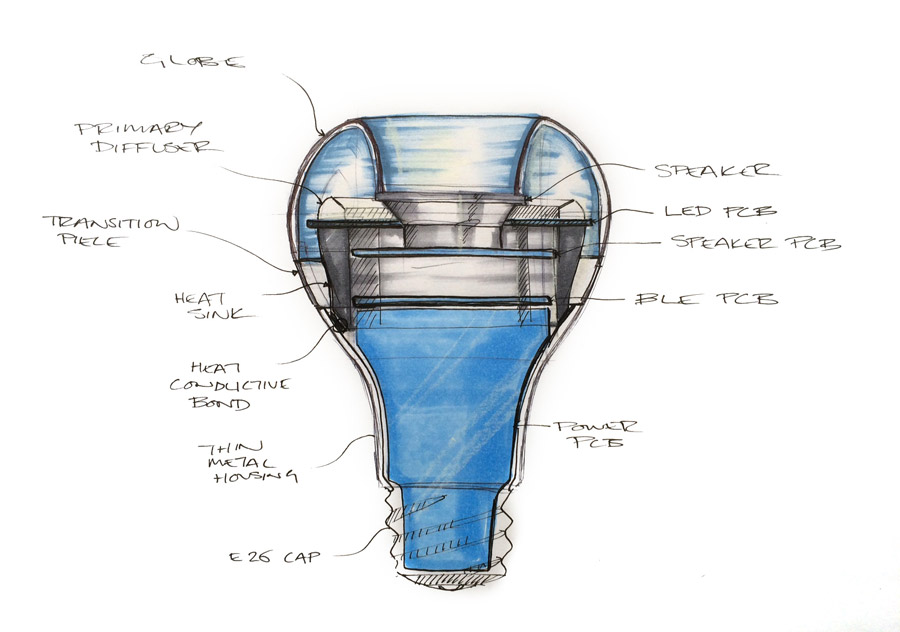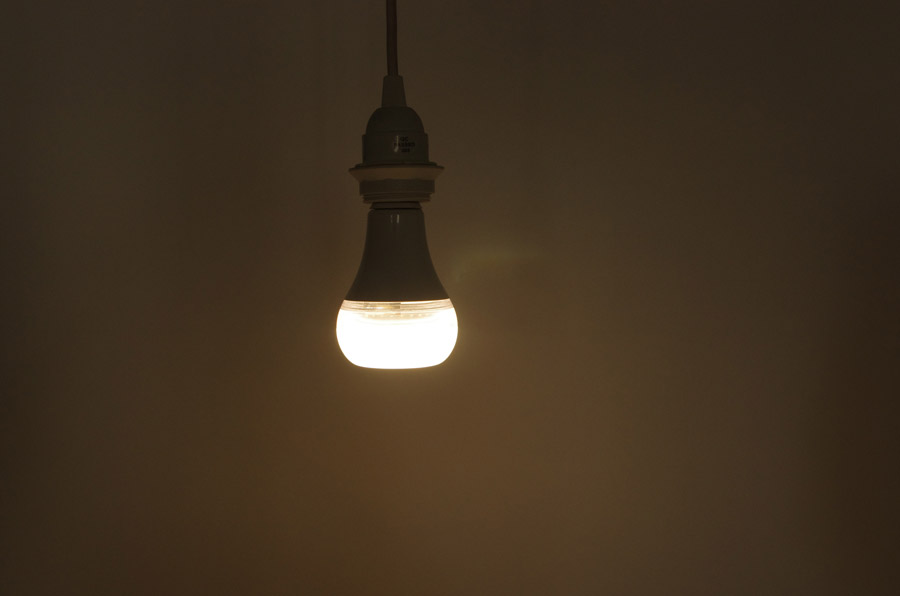
New York-based startup Astro aimed to create a solution that could easily fill your home with light and sound. The Twist, a clever all-purpose light bulb, combines a wireless speaker with a smart LED to give premium audio and lighting in every room all in one bulb!
The Twist offers self-adjusting natural tones that mimic the sun, so you can have color-temperature controlled light. The WiFi-enabled speaker is safely tucked into the interior of the bulb in a high-temperature-protected polycarbonate frame. This hubless, wireless design is Airplay supported, and connects to multiple speakers.
Tomorrow Lab partnered with Astro in the early stages of the design process to help provide Industrial Design & Product Architecture, early-stage research exploration, material sourcing, and Electrical Engineering support to create a truly unique and affordable light and sound solution.
Mechanical Engineering
Industrial Design
Design for Manufacture
Firmware Development
Prototyping

In order to design a truly remarkable light bulb, we conducted a deep research phase to understand everything from ambience, directionality, and light placement in the home (from loose table and floor lamps to set fixtures). We spent time reviewing the Twist brand identity, and purchased competitive existing smart bulbs to tear down and digest their design flaws.
The teardowns proved that some bulbs provide ample light, but the tone was too cold; while other’s got too hot to the touch for our liking, let alone to incorporate a speaker into. User research also indicated that people liked the idea of a smart bulb, but many of them found the new design features of existing smart bulbs to be a bit unfriendly, and too angular. We wanted to avoid anything harsh so that the Twist could blend seamlessly into the home no matter what location. We set to sketching, and soon came up with several design directions that highlighted specific size and shape of the bulb.
Having a feature strategy in place that incorporated user research and feedback, as well as technical feasibility, we were able to move forward with the product architecture. Design decisions such as clear, frosted, or a transitional combination of the two for the globe became game-changing decisions about the tone of the light that would display in the room. As pictured below, early prototypes included clear globes that proved too intense, which lead to choosing the frosted tip you see in the product today. To further compliment the design, we researched and purchased standard light bulb cap screw bases to make sure we selected and specified the most universal type to fit all lamps.
With a set overall aesthetic in place, the placement of all the internal components became a compromise between the electrical and mechanical teams. Each PCB had to be carefully considered when placed in the design with a heat sink and conductive bond. The LED band had to fit perfectly into the tip of the globe so that speaker would not deter from the light display. The singular, non-speaker bulb had to have each component adjusted to allow for equally ambient light. With all these considerations in place, the Industrial Design and Product Architecture came together to accommodate the delicate Electrical Engineering path.
Astro has an Electrical Engineer on their team, so we worked along-side them to create a circuit board strategy that could accommodate the LED, WiFi audio, Bluetooth control, and necessary AC-to-DC power conversion. We determined the LED had to have the equivalent lighting of a 60-watt bulb, output at least 800 lumens, and a careful mix of 2700K (Warm White) and 6500K (Cool White) light color. The Twist only uses 10 watts of energy, (compared to 60 for a standard bulb), and maintains a 15-year LED lifespan.
Using the form factors determined during the initial Industrial Design phase, the PCBs and LED circuit boards came together and fit inside the bulb body. The four PCBs stack together and allow compact, easy to assemble modular construction, and allow other functionalities to be added in the future.
Since the product has two wireless systems - WiFi, and Bluetooth or Airplay - two antennas were necessary. This created a design challenge as we had to extend the antennas outside of the metal areas of the bulb housing while leaving the silhouette of the bulb unbroken.

















